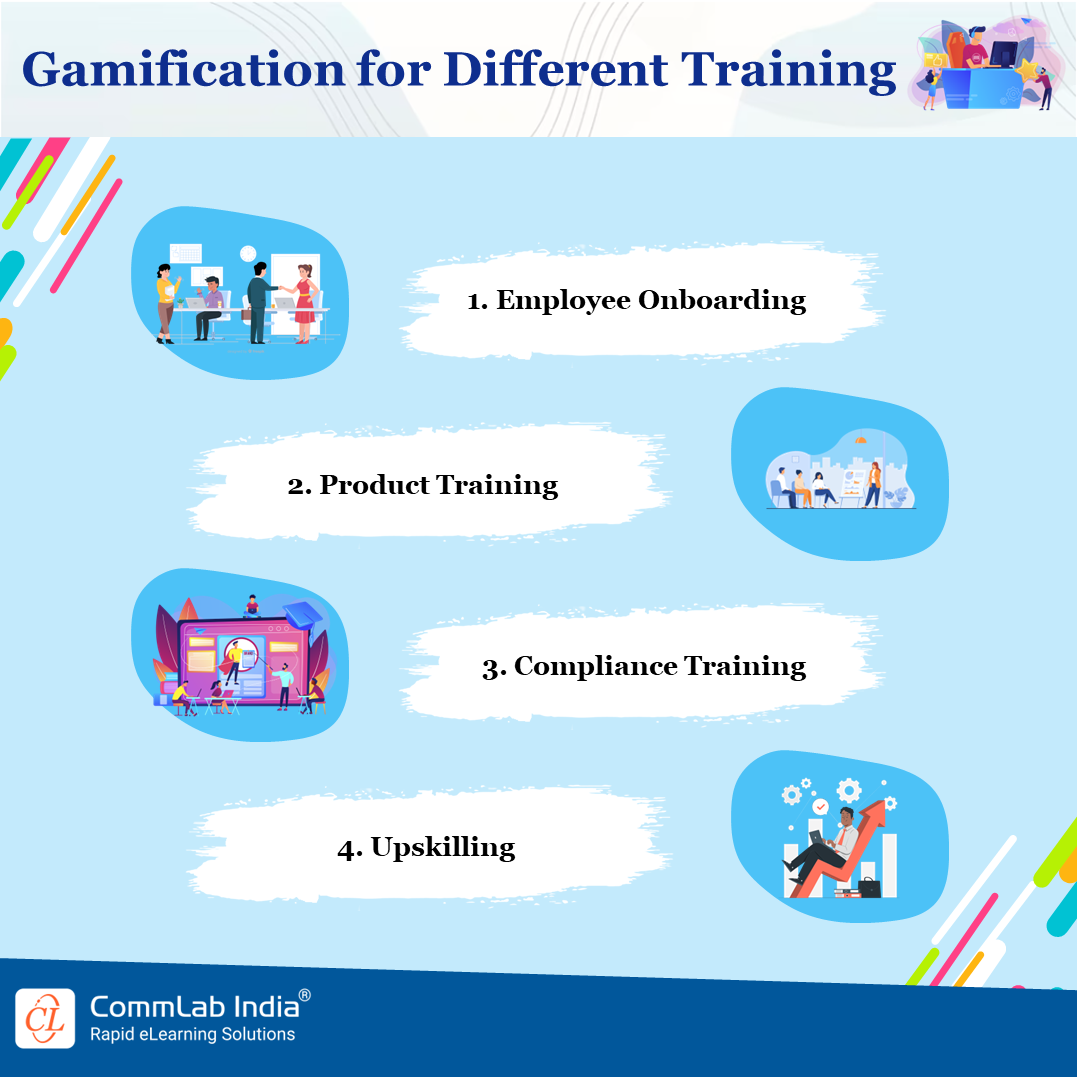Rapid eLearning + Gamification: Edutainment to Training [Case Study]
Want to make your employee training programs more engaging and effective? Incorporating gamification into rapid eLearning might be the answer! Read on as I discuss the benefits, strategies and challenges of the edutaining combo…

Attention L&D enthusiasts! Struggling to boost learner engagement and make your courses more interactive? Well, put an end to your struggles because here’s the winning combination for you – Rapid eLearning and Gamification. These are great tools to accelerate eLearning development and together, they are just incredible. When used together, they bring edutainment to corporate training and help create an engaging learning experience that will leave a lasting impact on your audience.
Rapid eLearning + Gamification – A Match Made in Heaven
Some of the benefits of using rapid eLearning and gamification include:
- Increased learner engagement
- More fun and interactive learning process
- Engaging course content that is easy to follow
- Shorter development time for courses
- Increased retention rates
This blog discusses the benefits, integration practices and how we helped a retail major succeeded corporate training with this winning combination –
So buckle up and get ready to take your eLearning game to the next level!
Introduction to Rapid eLearning and Gamification
Rapid eLearning is a process for creating online learning content that is fast, efficient, and effective. It is typically used to create focused online training modules that can be easily updated and revised as needed.
Gamification on the other hand is an Instructional Design (ID) strategy. It involves the use of game-like elements and mechanics in non-game contexts to engage learners and motivate them to achieve their goals. When used together, rapid eLearning and gamification can create an engaging and motivating learning experience for learners.
→ Explore Rapid eLearning for a Quick Rollout
Benefits of Incorporating Rapid eLearning and Gamification
There are many benefits of incorporating rapid eLearning and gamification into your training program. Gamification can help to engage learners and make the learning process more fun and interactive. Rapid eLearning can help to create engaging and effective courses in a shorter amount of time. When used together, these two strategies bring edutainment (education and entertainment together) and create an unbeatable combination for engaging learners.
Some of the benefits of using rapid eLearning and gamification include:
- Increased learner engagement
- More fun and interactive learning process
- Engaging course content that is easy to follow
- Shorter development time for courses
- Increased retention rates
Integrating Rapid eLearning and Gamification into Your Training Program
Rapid eLearning and gamification are two of the most popular trends in corporate training today. When used together, they can create a highly engaging and interactive learning experience for your employees.
Here are some tips for integrating rapid eLearning and gamification into your training program:
- Use rapid eLearning to develop short, engaging modules that cover the essential information your employees need to know.
- Use gamification techniques such as points, badges, and leaderboards to encourage employees to complete the modules.
- Make sure the modules are mobile-friendly so employees can access them on their smartphones or tablets.
- Use analytics to track employee progress and identify areas where additional training may be needed.

Types of Gamified Learning Strategies
Gamified learning strategies are becoming increasingly popular in the eLearning world. Here are some of the most popular types of gamified learning strategies that can be incorporated in your rapid eLearning projects:
- Leaderboards: Leaderboards are a great way to encourage competition and motivate learners to progress through an online training course. They can be used to track progress over time, or to compare progress between different learners.
- Achievements: Achievements can be used to recognize milestones and encourage continued learning. They can be displayed publicly (on a leaderboard) or privately (within the learner’s account).
- Badges: Badges can be used to reward specific accomplishments or behaviors. They can be displayed publicly (on a profile or leaderboard) or privately (within the learner’s account).
- Points: Points can be used to track progress, incentivize certain actions, or exchange for rewards. They can be displayed publicly (on a leaderboard) or privately (within the learner’s account).
- Quests: Quests are challenges that learners can complete to earn rewards. They often involve multiple steps and may require collaboration with other learners.
Challenges of Implementing Gamified Learning Strategies
Gamification is the application of game mechanics and game design techniques to non-game contexts, such as marketing, health care, and productivity. When gamification is used in training, learning goals and objectives are aligned with gameplay elements, such as points, badges, leaderboards, and levels.
Despite the potential benefits of gamified learning strategies, there are several challenges that need to be considered when implementing them. First, it can be difficult to create engaging and challenging games that align with learning objectives. Second, games often need to be adapted or created specifically for each subject area or topic. Third, games must be monitored and updated regularly to ensure they remain effective.
However, all these challenges can be addressed via rapid eLearning design and development. The approach involves the use of rapid eLearning authoring tools which have several easy-to-use features and templates that make it easy to develop game-based learning solutions.
We Developed a Scenario-Based Gamified Information Security Course for This Retail Major Build
A major global retail company approached us for our rapid eLearning services to train its employees on information security. For the course, we proposed scenario-based gamified learning approach. We created 4 personas and created 16 scenarios to train the company’s employees on information security. Using different tools – Flash (for the introduction video), Vyond (for the characters), Adobe Illustrator (for the score meter), and Photoshop, we developed a comprehensive course in Storyline 3.
Know more about the solution and its impact here
Editor’s note: This post was originally published in April 2023 and has been updated for comprehensiveness.





